Ribosomal peptide natural products: bridging the ribosomal and nonribosomal worlds
- PMID: 19642421
- PMCID: PMC2975598
- DOI: 10.1039/b714132g
Ribosomal peptide natural products: bridging the ribosomal and nonribosomal worlds
Abstract
Ribosomally synthesized bacterial natural products rival the nonribosomal peptides in their structural and functional diversity. The last decade has seen substantial progress in the identification and characterization of biosynthetic pathways leading to ribosomal peptide natural products with new and unusual structural motifs. In some of these cases, the motifs are similar to those found in nonribosomal peptides, and many are constructed by convergent or even paralogous enzymes. Here, we summarize the major structural and biosynthetic categories of ribosomally synthesized bacterial natural products and, where applicable, compare them to their homologs from nonribosomal biosynthesis.
Figures
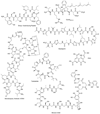


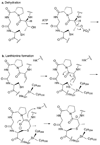


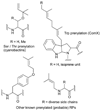


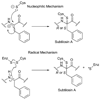






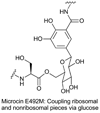




References
-
- Gillor O, Kirkup BC, Riley MA. Advances in Applied Microbiology. 2004:129–146. - PubMed
-
- Duquesne S, Destoumieux-Garzon D, Peduzzi J, Rebuffat S. Nat. Prod. Rep. 2007;24:708–734. - PubMed
-
- Breukink E, de Kruijff B. Nat. Rev. Drug Discov. 2006;5:321–332. - PubMed
-
- Cotter PD, Hill C, Ross RP. Nat. Rev. Microbiol. 2005;3:777–788. - PubMed
-
- Willey JM, van der Donk WA. Annu. Rev. Microbiol. 2007;61:477–501. - PubMed
Publication types
MeSH terms
Substances
Grants and funding
LinkOut - more resources
Full Text Sources
Other Literature Sources

